“Tug on anything at all and you'll find it connected to everything else in the universe.”—John Muir, “Return of the Condor” (p. 179).

Happy Earth Day! More than 190 countries will celebrate Earth Day on Tuesday, April 22, for the 44th time. Earth Day celebrations go on for the entire week in many parts of the United States. Observation of Earth Day centers on supporting protection of the environment and adopting Earth-friendly practices. Individuals, families, schools, and communities can join the Earth Day celebrations.
There are several ideas for Earth Day celebrations at school at EcoKids. For anyone interested in starting something that involves the entire community, there are ideas about how to organize a maze, Ecothon, and other great events to celebrate Earth Day here.
This week’s reviews from the Children’s Literature Special Interest Group share new favorite books that celebrate the Earth’s diverse habitats and weather, and explore conservation’s human side as well as ways nature has inspired technology. Let us join hands and celebrate the Earth and take some steps toward saving the only home we have.
Grades K-2
Bluemle, E. (2014). Tap tap boom boom. Illus. by Brian Karas. Somerville, MA: Candlewick Press.
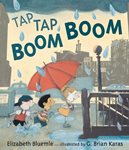 Weather is an interesting phenomenon to teach, experience, and watch. In one New York neighborhood, a storm creates memorable moments in the lives of the city’s inhabitants. When the downpour increases, one by one, they head underground where they share food and fellowship. Soon the soaking folks have drip-dried and the rain stops tap-tapping.
Weather is an interesting phenomenon to teach, experience, and watch. In one New York neighborhood, a storm creates memorable moments in the lives of the city’s inhabitants. When the downpour increases, one by one, they head underground where they share food and fellowship. Soon the soaking folks have drip-dried and the rain stops tap-tapping.
When they go above ground, a beautiful rainbow and sunshine greet the New Yorkers. All of them leave the shelter of the subway station with happy smiles for the cherished moments. Great for reading aloud and to start conversations about weather, the book presents an interesting reaction and experience to a normal weather phenomenon.
-Rani Iyer, Washington State University Pullman
Gleisner, J. L. (2014). We celebrate Earth Day in spring. Ann Harbor, MI: Cherry Lake Publishing.
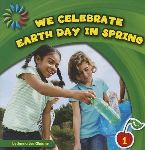 This book introduces the youngest readers to Earth Day celebrations and shows them ways that they can participate in the festivities. One class recycles newspapers. Others participate in cleaning up the park. Simple text and engaging pictures with children provide context to engage young readers.
This book introduces the youngest readers to Earth Day celebrations and shows them ways that they can participate in the festivities. One class recycles newspapers. Others participate in cleaning up the park. Simple text and engaging pictures with children provide context to engage young readers.
-Rani Iyer, Washington State University Pullman
Peschke, M. (2014). Kylie Jean: Green Queen. Illus. by Tuesday Mourning. North Mankato, MA: Picture Window Books.
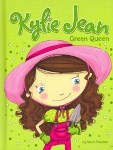 While fiction books on environmental themes are rather rare, it is even more difficult to find such books for early readers. In this book, Kylie Jean is determined to celebrate Earth Day. She comes up with a plan and invites her friends to join. Soon, they plan to clean up their trash-filled school yard and repair and repaint its play things.
While fiction books on environmental themes are rather rare, it is even more difficult to find such books for early readers. In this book, Kylie Jean is determined to celebrate Earth Day. She comes up with a plan and invites her friends to join. Soon, they plan to clean up their trash-filled school yard and repair and repaint its play things.
Kylie Jean is one lucky girl—her entire family, from her grandma to her youngest cousin, lives in Jacksonville, Texas. Therefore, she has no problem attracting participants into the program. However, Kylie had no idea that the older family members in her family would be impressed by her enthusiasm so that they, too, beautify Jacksonville. All through the book sustainability tips are included for students to follow. Passages in this book can also be adapted for a play.
-Rani Iyer, Washington State University Pullman
Berkes, M. (2014). The swamp where the gator hides. Illus. by Roberta Baird. Nevada City, CA: Dawn Publications.
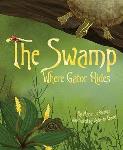 Habitats are filled with hundreds of creatures. From the algae to the gators, all of them have complex and intricate relationships with each other. This title explores these interconnections among species and habitats marvelously. The gator hides under the algae while the other animals are going about their business in the swamp. Turtle, snake, frog, deer, egret, vole, and bobcat are all depicted doing their activities around the water when the gator jumps out.
Habitats are filled with hundreds of creatures. From the algae to the gators, all of them have complex and intricate relationships with each other. This title explores these interconnections among species and habitats marvelously. The gator hides under the algae while the other animals are going about their business in the swamp. Turtle, snake, frog, deer, egret, vole, and bobcat are all depicted doing their activities around the water when the gator jumps out.
Who will be his lunch today? The text and pictures capture a delightful rhyming story for younger readers about a thrilling moment in the swamp. This title is great for reading in the classroom as it invites young readers to join in making the sounds.
-Rani Iyer, Washington State University Pullman
Grades 3-5
Stewart, M. (2014). Feathers: Not just for flying. Illus. by Sarah Brannen. Watertown, MA: Charlesbridge.
 Birds and feathers go together. But what are feathers for? Melissa Stewart has created another masterful book on the wonders and many uses of feathers. Feathers can serve as a blanket, a cushion, or an umbrella. Feathers protect birds from sunburn, soak up the water like a sponge, or provide camouflage. Some feathers are fancy and attract attention. Others are strong and tough like a backhoe. Feathers can glide like a sled. Each use is illustrated with species and specific details. The back matter has details regarding kinds of feathers and a write up by the author provides more information for education. Teachers can use this book as a virtual field trip in the classroom.
Birds and feathers go together. But what are feathers for? Melissa Stewart has created another masterful book on the wonders and many uses of feathers. Feathers can serve as a blanket, a cushion, or an umbrella. Feathers protect birds from sunburn, soak up the water like a sponge, or provide camouflage. Some feathers are fancy and attract attention. Others are strong and tough like a backhoe. Feathers can glide like a sled. Each use is illustrated with species and specific details. The back matter has details regarding kinds of feathers and a write up by the author provides more information for education. Teachers can use this book as a virtual field trip in the classroom.
-Rani Iyer, Washington State University Pullman
Salas, L. P. (2014). Water can be… Illus. by Violeta Dabija. Minneapolis, MN: Millbrook Press.
 Water is water. Or is it? This delightful book introduces readers to the various uses of water and the parts of the water cycle. The book begins with “Water can be a… tadpole hatcher” (unpaged) and then provides various everyday connections such as picture catcher, downhill speeder, kid drencher, before entering into the part of water cycle using scientific terms such as “fog” and “frost.” In the end the author talks about more variations of water—ice and snow.
Water is water. Or is it? This delightful book introduces readers to the various uses of water and the parts of the water cycle. The book begins with “Water can be a… tadpole hatcher” (unpaged) and then provides various everyday connections such as picture catcher, downhill speeder, kid drencher, before entering into the part of water cycle using scientific terms such as “fog” and “frost.” In the end the author talks about more variations of water—ice and snow.
Illustrated with delightful, evocative pictures filled with details, the water sparkles in both prose and pictures. This is a great addition for school and any teacher’s personal library. Back matter introduces teachers and readers to more information about water and the water cycle.
-Rani Iyer, Washington State University Pullman
Brett, J. (2014). Wild about bears. Watertown, MA: Charlesbridge.
 There are only eight kinds of bears around the world. The author takes the readers through a journey to meet the bears. From the cloud forests to the polar regions, bears live in various habitats. Often exploited and misunderstood, bears are an important species that contributes to the Earth’s biodiversity.
There are only eight kinds of bears around the world. The author takes the readers through a journey to meet the bears. From the cloud forests to the polar regions, bears live in various habitats. Often exploited and misunderstood, bears are an important species that contributes to the Earth’s biodiversity.
The book also discusses the subspecies of bears—the Kodiak bear of Alaska’s Kodiak Island is a subspecies of brown bear. And offers interesting facts—the brown bear has the largest home range of any land mammal, and if food is scarce, the bears may roam up to one thousand square miles.
The back matter provides readers with maps of bear species’ distribution and a habitat glossary. This is a great book for use in classroom. It can be paired with favorites such as “Brown Bear, Brown Bear, What do You See?”
-Rani Iyer, Washington State University, Pullman
Grades 6-8
Lasky, K. (2009). One beetle too many: The extraordinary adventures of Charles Darwin. Illus. by Matthew Trueman. Somerville, MA: Candlewick Biographies.
 Charles Darwin’s fascinating life and contributions to life sciences unfold in a graceful manner under the skillful and expert writing of Kathryn Lasky. Beginning with his childhood, the author traces Charlie’s love for beetles and bugs. He was sent to boarding school, but failed miserably. When he went to Scotland to become a medical doctor, he hated both anatomy and theology. But a letter from his friend changed his life forever. The letter held tickets for sailing into the unknown world. Everyone he knew, his father and sisters, uncles and aunts, all objected to this wild scheme. But Charles was determined to travel.
Charles Darwin’s fascinating life and contributions to life sciences unfold in a graceful manner under the skillful and expert writing of Kathryn Lasky. Beginning with his childhood, the author traces Charlie’s love for beetles and bugs. He was sent to boarding school, but failed miserably. When he went to Scotland to become a medical doctor, he hated both anatomy and theology. But a letter from his friend changed his life forever. The letter held tickets for sailing into the unknown world. Everyone he knew, his father and sisters, uncles and aunts, all objected to this wild scheme. But Charles was determined to travel.
On his voyage and during landfalls, he watched ants, spiders, snakes, lizards, chameleons, and birds. He encountered earthquakes and giant tortoises. Back home, Charles began synthesizing all the observations and information he had. His idea that all beings on Earth evolved from simpler life forms caused great uproar. A life filled with study of all creatures is wonderfully illustrated.
-Rani Iyer, Washington State University Pullman
Grades 8-12
Davies, N. (2013). The lion who stole my arm. Illus. by Annabel Wright. Somerville, MA: Candlewick.
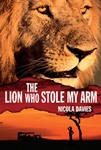 Books that explore the human-animal conflict are important for young readers. They present the complex situations that put people directly in the path of the animals. Some human-animal interactions have not been favorable for the animals, and have resulted in their extinction.
Books that explore the human-animal conflict are important for young readers. They present the complex situations that put people directly in the path of the animals. Some human-animal interactions have not been favorable for the animals, and have resulted in their extinction.
In this slim volume, Nicola Davies tells the story of Pedru, who is waiting to avenge the lion who stole his arm. He is devastated because he always wanted to be a great hunter like his father. However, his father says, “…the finest tools of the hunter, your eyes and your ears, are still working… You do not need two arms to be strong (p. 12).”
The lion continues to create havoc in the local villages. Pedru and his father decide to hunt down the creature. But the lion is clever and gives them the slip every time. While chasing the lion, they encounter three researchers who are studying lions. Pedru asks them to collar the lion that is troubling the village. After seeing the data for several other radio-collared lions and their cubs, he gradually begins to feel empathy for them. When he shares the drawing of the lion that attacked him, he not only learns the lion’s name—Anjani—but also learns the pedigree and its kith and kin. When he encounters Anjani next, will he raise his spear to kill or work to protect the lions? This a great book for book club and class discussion.
-Rani Iyer, Washington State University Pullman
Gregory, J. (2014). From butterfly wings to display technology. Ann Harbor, MI: Cherry Lake Publishing.
 Several fantastic modern innovations are inspired by nature. How does innovation happen? It partly relies on being open to different perspectives and sharing failures and successes with others. Cell phones, iPads, computer screens, and billboards are all heralding messages through using the best digital technology available today. That modern display technology is inspired by one of nature’s wondrous creations, butterfly wings.
Several fantastic modern innovations are inspired by nature. How does innovation happen? It partly relies on being open to different perspectives and sharing failures and successes with others. Cell phones, iPads, computer screens, and billboards are all heralding messages through using the best digital technology available today. That modern display technology is inspired by one of nature’s wondrous creations, butterfly wings.
In the natural world, butterfly wings play an important role. They help butterflies avoid predators, attract mates, and offer camouflage. Butterfly wings are even colored differently to capture the beauty of the display. Almost all the electronic screens today use LCD technology that has been inspired by the sky and the light scattering from the sun. This highly technical book will be an exciting read for students interested in both technology and nature.
-Rani Iyer, Washington State University Pullman
These reviews are submitted by members of the International Reading Association's Children's Literature and Reading Special Interest Group (CL/R SIG) and are published weekly on Reading Today Online.
The CL/R SIG is accepting submissions to the fall 2014 edition of their journal, The Dragon Lode, through April 15, 2014. There is an open theme, and they invite manuscripts that explore contemporary issues and questions, genre study, literary theory, and research related to children's literature and reading. Manuscripts should be no longer than 20 double-spaced, typed pages. Use APA (6th edition) formatting. Author's name, affiliation, mailing address, telephone and fax numbers, and e-mail address should be on a separate cover page. Photos and illustrations should be sent as a separate jpeg file. Any reference to the author that would enable the reviewer to know the author's identity should not appear in the manuscript. Submit all manuscripts to: Dr. Ruth McKoy Lowery, Co-editor.
CL/R SIG will host a special session entitled Children's Literature: The Perfect Teachable Moment on Saturday, May 10 at 3:00 p.m. at the International Reading Association 59th Annual Conference in New Orleans. The session celebrates award-winning children's and young adult books and authors. Author Nancy Bo Flood is the keynote session speaker. Her work encompasses more than a dozen books. Her recent historical fiction "Warriors in the Crossfire" is set in Saipan during WWII, and was selected on the 2011 Notable Books for a Global Society (NBGS) list. The NBGS list represents selections and authors from all genres K-12, with a focus on understanding of and appreciation for the world's full range of diverse cultures, ethnic, and racial groups. The session will also include presentation of the 2014 Notable Books for a Global Society (NBGS) list by members of the selection committee. Visit http://www.iraconference.org to learn more about IRA 2014 or to register.